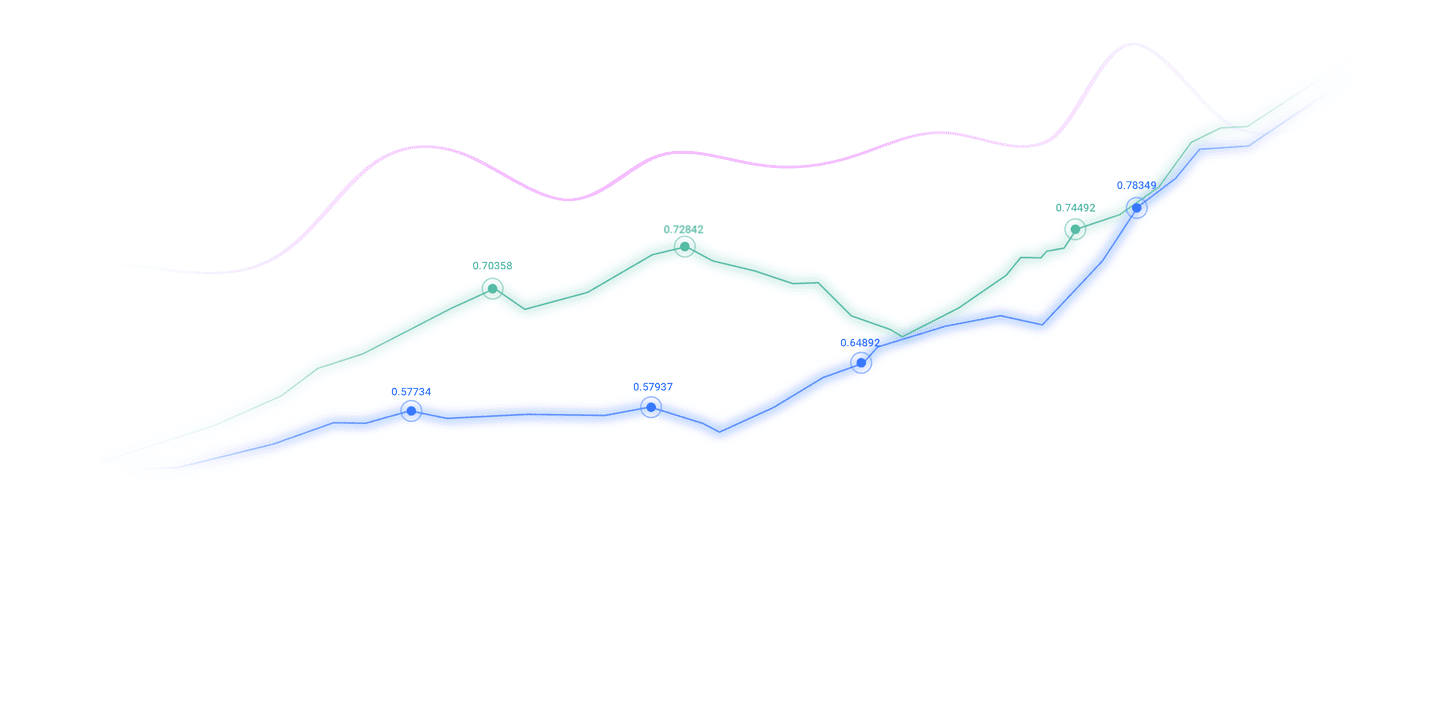Trusted by over 15 Million Traders
The Most Awarded Broker
for a Reason
CATEGORIES
News
- GBP/USD fell after three-day rebound and returned below the 20-day moving averag
- Bullish momentum for crude oil is accumulating, Russia-Ukraine negotiations are
- Be careful of falling back when gold is short-term, and the current price of 338
- The dollar hovers around 98, and the interview for next Fed chairman will kick o
- Chinese live lecture today's preview
market news
Why can't the GDP data save the euro? Technical answer
Wonderful Introduction:
Love sometimes does not require the promise of vows, but she must need meticulous care and greetings; sometimes she does not need the tragic spirit of Liang Zhu turning into a butterfly, but she must need the tacit understanding and www.xmserving.companionship with each other; sometimes she does not need the follower of male and female followers, but she must need the support and understanding of each other.
Hello everyone, today XM Foreign Exchange will bring you "[XM Official Website]: Why can't the Euro exceed expectations be saved? Technical answers are given". Hope it will be helpful to you! The original content is as follows:
On Wednesday (July 30), the euro/dollar continued its weak pattern, and the US market traded near the 1.1530 level before the market, and the exchange rate showed an accelerated downward trend after breaking through key technical support. Although the euro zone released more than expected GDP data, market concerns about the subsequent impact of the US-EU trade agreement continue to ferment, and the euro faces multiple pressure tests.
Fundamentals
From the macroeconomic perspective, the initial GDP of the euro zone recorded a month-on-month growth of 0.1% in the second quarter, which was lower than the 0.6% increase in the first quarter, but it still exceeded the market's expectations of the 0% reading. Germany's retail sales data also performed well, with an increase of 1.0% in June, far exceeding the expected 0.5%, providing fundamental support for the euro. France's GDP accelerated to 0.3% in the second quarter, also exceeding the expected stable growth forecast of 0.1%.
However, the conclusion of the US-EU trade agreement has had a significant negative impact on the euro. The market is cautious about the possible long-term impact of the agreement, and the option market's demand for the upward protection of the euro has dropped significantly, reflecting a fundamental shift in market sentiment. Fed policy expectations also have an important impact on exchange rate trends. The market generally expects the Fed to maintain the current interest rate level unchanged, but Chairman Powell's speech will become a key signal for judging future policy directions.
In the United States, JOLTS job vacancy data showed a certain cooling in the employment market, from 7.77 million in May to 7.43 million, exceeding market expectations. Although the consumer confidence index has improved, the survey results show economic impact of Americans on tariff policiesThere are still concerns. Preliminary GDP data is expected to show that the annualized growth rate in the second quarter will reach 2.4%, which may provide support for the US dollar.
Technical aspect:
From the perspective of technical analysis, the euro/dollar currently shows typical short market characteristics. The current price is at the level of 1.1526 and has fallen below several important moving average support.
The Bollinger Band indicator shows that the exchange rate is currently operating near the lower track, and the middle track is at the level of 1.1654, becoming an important resistance level in the short term. The upper track is around 1.1837, which will constitute strong resistance for any rebound.
The MACD indicator shows a clear short arrangement, the MACD line is at -0.0047 level, the signal line DEA is -0.0039, and the MACD bar chart is -0.0016. The overall indicator runs below the zero axis, confirming the current downward trend.
The RSI currently reads 29.8308, and has entered the oversold area, which usually indicates a possible technical rebound in the short term. However, in a strong downward trend, RSI may remain in the oversold area for a long time, so oversold by RSI alone is not enough to confirm the trend reversal opportunity.
Prevention of Market Sentiment
Current market sentiment is obviously inclined to be cautious, and euro long positions are facing significant pressure. CFTC position data shows that speculative long positions are large in scale, and this positioning creates conditions for further downward adjustments. Traders are paying close attention to the uncertainty of US-EU trade relations, and any relevant policy signals may trigger violent fluctuations in exchange rates.
The Fear and Greed Index presents a fear-oriented reading on Euro-related assets, reflecting market concerns about the euro's outlook. The volatility curve of the options market shows that short-term volatility expectations have risen, suggesting traders expect greater price volatility in the near future.
Analysis of capital flow, US dollar assets continue to be favored, while euro zone assets are facing pressure of capital outflow. This differentiation of capital flows further strengthens the pattern of strong US dollar and weak euro.
Future Outlook
Short-term Outlook
Analysis believes that from the short-term technical analysis, the exchange rate faces further downward risks, and the key support level points to 1.1500. Although RSI has entered the oversold area, the strength and sustainability of a technical rebound may be relatively limited in a strong downward trend;
The rebound market is expected to face the test of the 1.1580-1.1600 resistance band, and the stronger resistance level is in the 1.1650-1.1670 range; only if the 1.1700 mark is recovered can the exchange rate re-examine the medium-term trend direction.
Medium-term Outlook
In the medium term, the analysis believes that the trend of the euro/dollar will mainly depend on the Fed's policy path and the evolution of US-EU trade relations. If the Fed maintains a hawkish stance, the widening of interest rate spreads will continue to suppress the euro. On the contrary, if the ECB is in inflationUnder pressure, the euro may be supported by force to adopt a more positive policy attitude;
In terms of fundamental factors, the reflection of the economic resilience of the euro zone requires more data support, and the single-quarter GDP data is still difficult to reverse the market's overall view of the euro. The specific terms and implementation details of the US-EU trade agreement will have a profound impact on the exchange rate;
From the technical medium-term cycle analysis, if the exchange rate re-stands above 1.1650, it may re-test the resistance area of 1.1750-1.1800. But analysts believe that before this, short trends still dominate and rebounds may be seen as new short selling opportunities.
The above content is all about "[XM official website]: Why can't the euro save the expected GDP data? The technical answer is given". It was carefully www.xmserving.compiled and edited by the editor of XM Forex. I hope it will be helpful to your transactions! Thanks for the support!
Life in the present, don’t waste your current life in missing the past or looking forward to the future.
Disclaimers: XM Group only provides execution services and access permissions for online trading platforms, and allows individuals to view and/or use the website or the content provided on the website, but has no intention of making any changes or extensions, nor will it change or extend its services and access permissions. All access and usage permissions will be subject to the following terms and conditions: (i) Terms and conditions; (ii) Risk warning; And (iii) a complete disclaimer. Please note that all information provided on the website is for general informational purposes only. In addition, the content of all XM online trading platforms does not constitute, and cannot be used for any unauthorized financial market trading invitations and/or invitations. Financial market transactions pose significant risks to your investment capital.
All materials published on online trading platforms are only intended for educational/informational purposes and do not include or should be considered for financial, investment tax, or trading related consulting and advice, or transaction price records, or any financial product or non invitation related trading offers or invitations.
All content provided by XM and third-party suppliers on this website, including opinions, news, research, analysis, prices, other information, and third-party website links, remains unchanged and is provided as general market commentary rather than investment advice. All materials published on online trading platforms are only for educational/informational purposes and do not include or should be considered as applicable to financial, investment tax, or trading related advice and recommendations, or transaction price records, or any financial product or non invitation related financial offers or invitations. Please ensure that you have read and fully understood the information on XM's non independent investment research tips and risk warnings. For more details, please click here


































































































